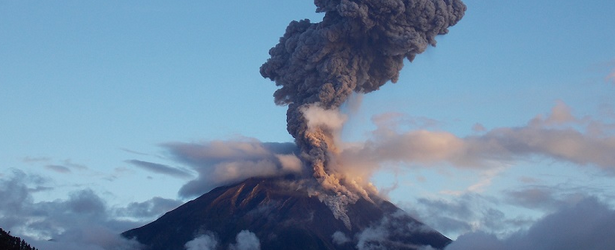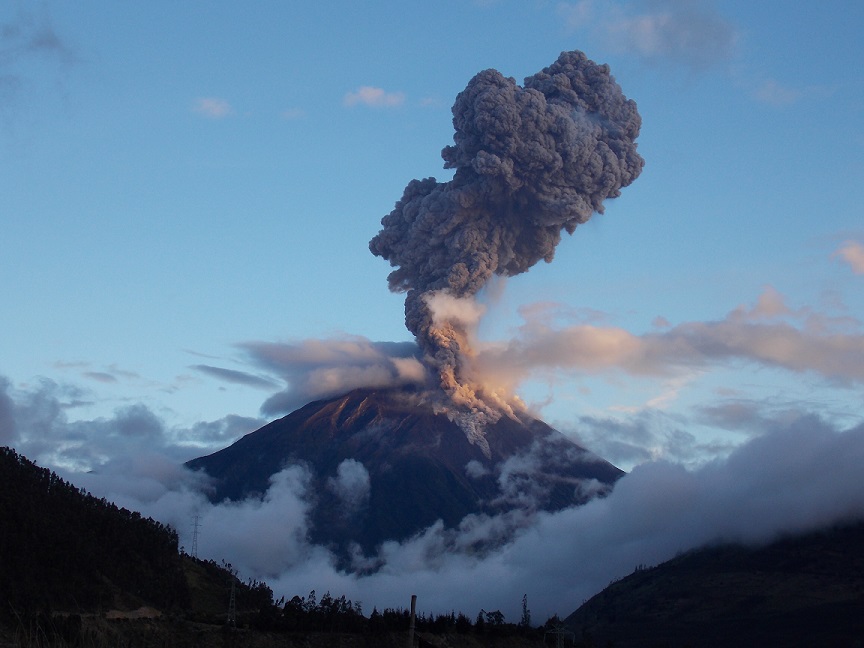New eruptive phase started at Tungurahua volcano, Ecuador

Ecuadorian Tungurahua volcano entered a new vigorous eruptive phase on Friday, April 4, 2014. A moderately strong vulcanian explosion occurred at 23:10 UTC and produced an eruption column rising several kilometers as well as small pyroclastic flows on the cone.
The eruption plume was originally estimated to have reached up to 15 km altitude (50,000 ft), but it was probably much lower than that, Volcano Discovery reported. The plume drifted to westerly directions. Ash / lapilli fall with 1 – 3 cm diameter clasts occurred in the areas of Bilbao, Choglontus, Chacauco and Cusúa.
The explosion, which likely cleared the conduit from a solid plug was followed by frequent, smaller explosions accompanied by a constant tremor signal of high energy. When the volcano was not hidden in clouds, the expulsion of incandescent blocks that rolled down the upper flanks, and steam-gas-ash emissions could be observed. Individual stronger explosions also occurred intermittently, some of which rattled the windows and doors of the Tungurahua Volcano Observatory (OVT), located 14 km northwest.

Eruption of Tungurahua on 4 April 18:10 (F. Vásconez – OVT/IGEPN).
"Tungurahua, a steep-sided andesitic-dacitic stratovolcano that towers more than 3 km above its northern base, is one of Ecuador's most active volcanoes. Three major volcanic edifices have been sequentially constructed since the mid-Pleistocene over a basement of metamorphic rocks. Tungurahua II was built within the past 14,000 years following the collapse of the initial edifice.
Tungurahua II itself collapsed about 3000 years ago and produced a large debris-avalanche deposit and a horseshoe-shaped caldera open to the west, inside which the modern glacier-capped stratovolcano (Tungurahua III) was constructed. Historical eruptions have all originated from the summit crater. They have been accompanied by strong explosions and sometimes by pyroclastic flows and lava flows that reached populated areas at the volcano's base. Prior to a long-term eruption beginning in 1999 that caused the temporary evacuation of the city of Baños at the foot of the volcano, the last major eruption had occurred from 1916 to 1918, although minor activity continued until 1925 (GVP)"
Featured image: F. Vásconez – OVT/IGEPN

first chile then peru now this….